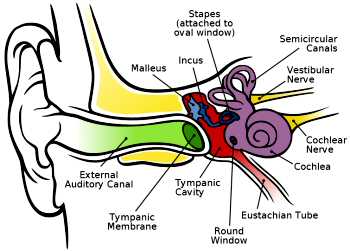Benign Paroxysmal Positional Vertigo (BPPV) Causes, Symptoms, Diagnosis And Treatment

What Is Benign Paroxysmal Positional Vertigo BPPV?
Benign paroxysmal positional vertigo (BPPV) is a disorder arising in the inner ear.
It is one of the most common causes of vertigo — the sudden sensation that one is spinning or that the inside of one’s head is spinning.
It causes brief episodes of mild to intense dizziness.
Although benign paroxysmal positional vertigo can be a bothersome problem, it’s rarely serious except when it increases the chance of falls.
Causes Of Benign Paroxysmal Positional Vertigo BPPV:
Often, there’s no known cause for BPPV. This is called idiopathic BPPV.
When a cause can be determined, BPPV is often associated with a minor to severe blow to the head.
Less common causes of BPPV include disorders that damage the inner ear or, rarely, damage that occurs during ear surgery or during prolonged positioning on the back, such as in a dentist chair.
Migraines are also associated with the development of BPPV.
Moreover, It can be triggered by any action which stimulates the posterior semi-circular canal, including:
- Looking up or down
- Post-head injury
- Sudden head movement
- Rolling over in bed
- Tilting the head
BPPV may be made worse by any number of modifiers which may vary between individuals:
- Changes in barometric pressure — patients may feel increased symptoms up to two days before rain or snow
- Lack of sleep (required amounts of sleep may vary widely)
- Stress
Symptoms Of Benign Paroxysmal Positional Vertigo BPPV:
Symptoms of BPPV include:
- Emesis (vomiting) is common, depending on the strength of the vertigo itself and the causes for this illness.
- Nausea
- Paroxysmal — sudden onset of episodes with a short duration: lasts only seconds to minutes.
- Positional in onset: Can only be induced by a change in position.
- Pre-syncope (feeling faint) or syncope (fainting) is unusual but possible.
- Rotatory (torsional) nystagmus, where the top of the eye rotates towards the affected ear in a beating or twitching fashion, which has latency and can be fatigued (the vertigo should lessen with deliberate repetition of the provoking maneuver). Nystagmus should only last for 30 seconds to one minute.
- Visual disturbance: It may be difficult to read or see during an attack due to associated nystagmus.
- Vertigo — spinning dizziness, which must have a rotational component.
Diagnosis Of Benign Paroxysmal Positional Vertigo BPPV:
BPPV can be diagnosed via the following tests and exams:
- Physical examination
- Electronystagmography (ENG) or videonystagmography (VNG).
The purpose of these tests is to detect abnormal eye movement.
- MRImay be performed to rule out other possible causes of vertigo.
Treatment Of Benign Paroxysmal Positional Vertigo BPPV:
BPPV can be treated in the following ways:
- Repositioning maneuvers
- Epley maneuver
- Semont maneuver
- Roll maneuver
- Brandt-Daroff exercises
- Medications
- Surgery
- semi-circular canal occlusion
By : Natural Health News




